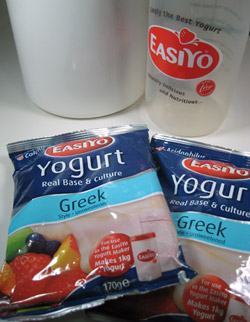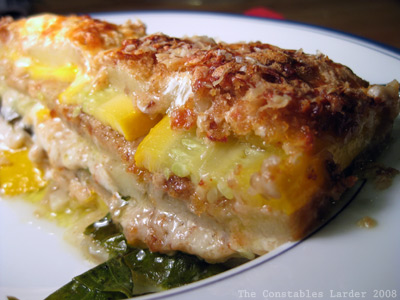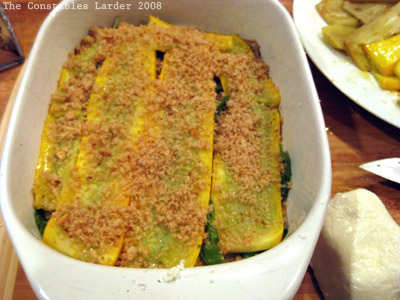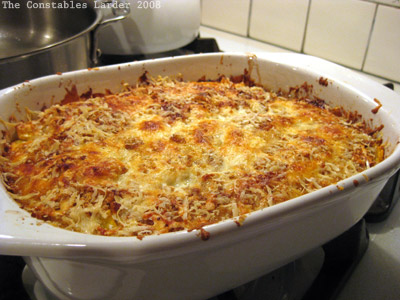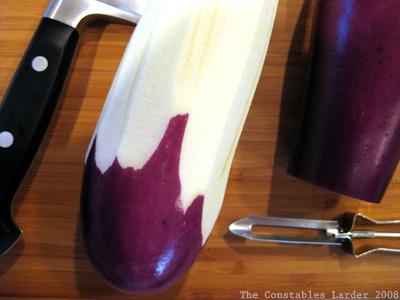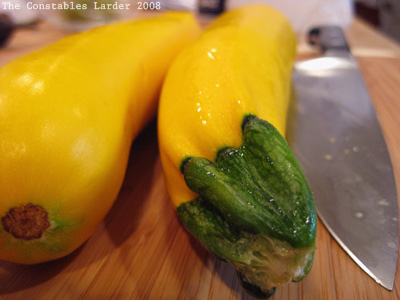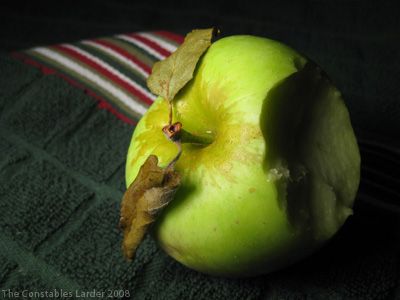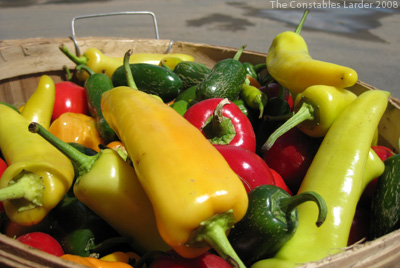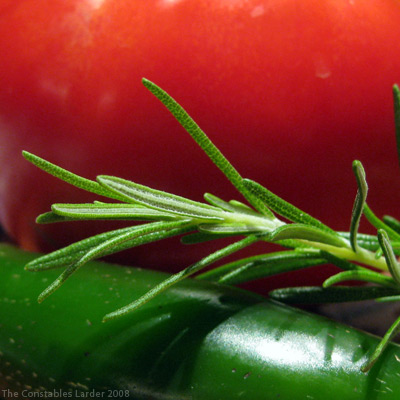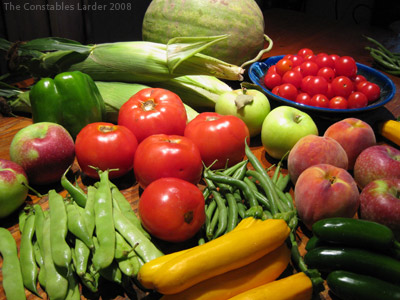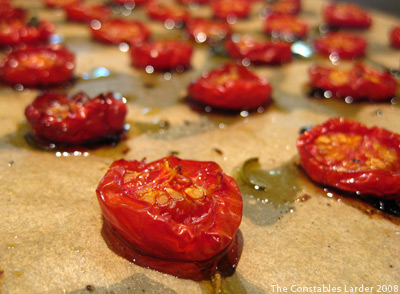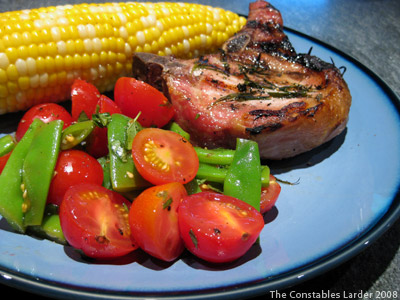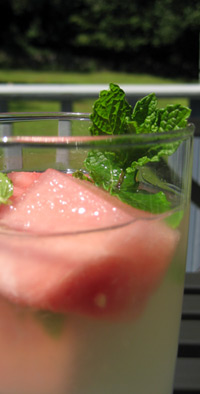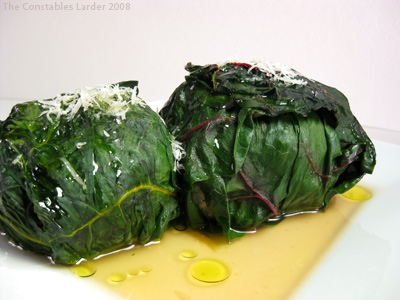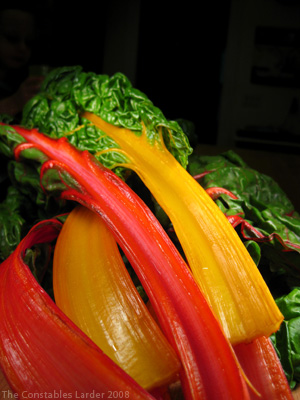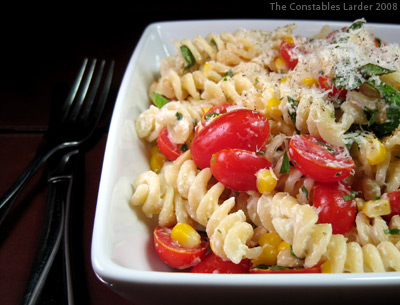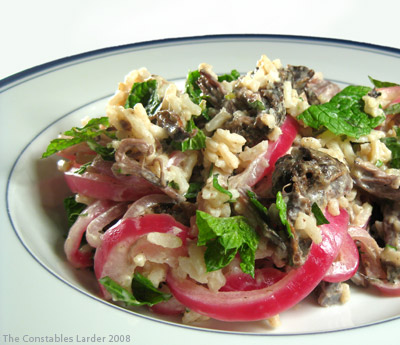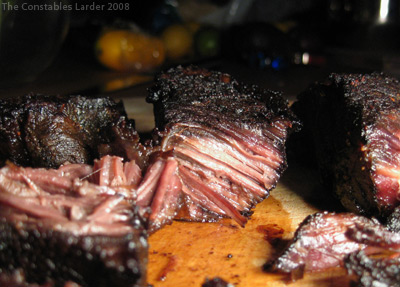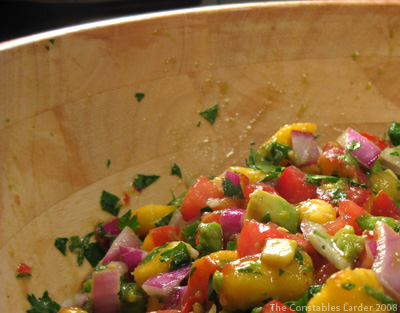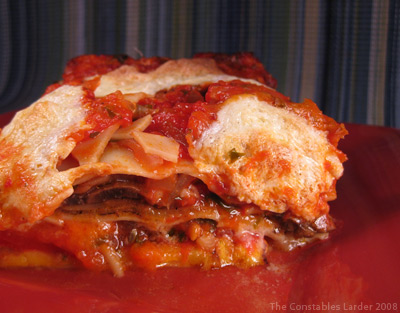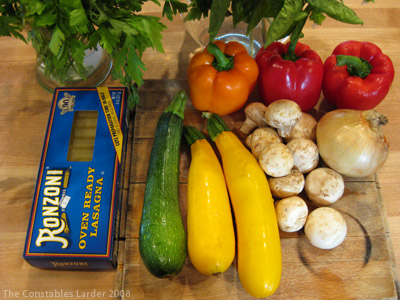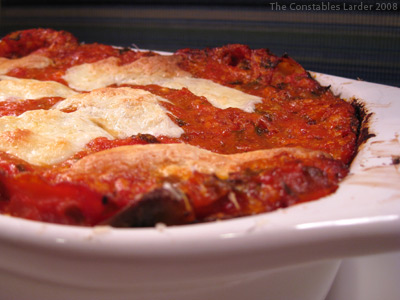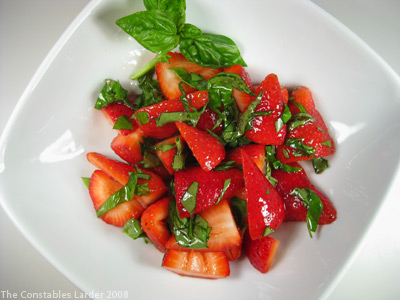
Tonight I adapted a recipe from the Sept 2008 edition of Food & Wine, a chickpea and spinach stew (original recipe here). I can’t resist saying, the cover of the magazine absolutely cracked me up. It read:
our 20 best fast recipes ever
So does a food mag have to be like Cosmo now? And I query: do they really come up with 20 new best sex positions each month? (I refer to Cosmo there, not F&W, although I guess that could be an interesting editorial direction…) . At least F&W stuck to a round number, unlike Details which prefers things like 133 ways to look great… I’m imaging the editorial cutting table: “sorry Boss, we tried to make it to your 135 quota but just couldn’t get there!“
Enough amusing myself — onto the food! This is a great dish, and while I’m sure the original recipe is good, I had to go my own direction. I diverged from F&W in a number of ways: smaller portion, longer cooking (I know … efficiency yada yada yada but it’s a STEW, not a chickpea stirfry for crying out loud), and slightly different ingredients (for one, I can’t stand raisins in cooked food but that’s just me — I’m a “savory” type).
Chickpea Stew
1/2 lb of dried chickpeas (approx)
7 oz bag of baby spinach
1 medium yellow onion or half a large vidalia onion
3 roma tomatoes
1 medium garlic clove
small pinch of saffron
1 tsp hot hungarian paprika
1/2 tsp cumin
1 tbsp tomato paste
1 bay leaf
salt and pepper
olive oil (extra virgin if you have it)
The Chickpeas
You can easily use a can of pre-cooked chickpeas, but I don’t like the taste of the liquid you get with canned beans, so I try to cook from dried beans whenever time permits (one also has more control over tenderness that way). Before I went to work this morning, I soaked about half of a 1 lb bag of dried chickpeas in a bowl of cool water.
Rinse the chickpeas, placed them in a medium pot and covered with water about an inch above the chickpeas. Bring them to a boil, lower heat to a simmer, and cook for about an hour (you can add things like a carrot, onion, parsley stems, or bay leaf if you feel inspired). If you don’t have time to soak, but want to use dried beans, you’ll probably need to let them cook for another 40 to 60 minutes. Once your chickpeas are done, save three cups of the cooking liquid, drain the pot and return the chickpeas and 1 cup of the cooking liquid to the pot.

The Tomatoes
I skinned and seeded the Roma tomatoes. If you are in a hurry, you can skip this step, but it is a nice touch. To skin a tomato, cut a shallow X at the bottom (I find with the oblong roma tomato, it is easier with slightly bigger crosshatch cuts than normally needed) and place it in boiling water for about 30 seconds. Once it cools, the skin should come off easily. Quarter the tomatoes and use your fingers to gently scoop out the seeds. Then loosely chop into smaller pieces and add to the pot with the chickpeas. Turn on the heat and get the chickpeas, liquid and tomatoes to a simmer.
The Onion
Chop your onion and saute it with a tablespoon of olive oil until it just turning translucent, then add to the pot. Keep the saute pan handy for the spinach (below).
The Spices
Mash a medium-sized clove of garlic with the flat of your knife and remove the skin. Then chop and place in a mortar. Add the ground cumin, hot paprika, 1/4 tsp of salt, and (very optionally, given the price of saffron) a pinch of saffron threads to the mortar. Pound into a paste and then add to the stew pot, along with a bay leaf, the tomato paste, and 1/2 cup of the reserved liquid (if you forgot to reserve any, just use water). Stir and keep at a low simmer for 20 minutes.
You want the stew to be slightly liquidy but not soupy, so continue adding the reserved liquid as needed as the stew thickens, stirring periodically. Add salt and pepper to taste (I estimate that I added another 1/4 tsp of salt here). You might also decide to add more cumin if you want a stronger spiced meal.
Adding the Spinach
As the stew is lightly simmering, saute the baby spinach in a tablespoon of olive oil for a couple of minutes until it has just cooked down. Drain in a collander and press on the leaves to drain the extra liquid. Mix the spinach into the stew pot and let simmer for another 10 or 15 minutes, adding any extra reserved liquid to achieve the consistency you want, and tasting for spices.
When you serve, you can drizzle a little more olive oil and/or grind a little black pepper on top of each bowl. I ate this with some grilled sausages, but frankly it would be a great, very satisfying meal unto itself with a big hunk of good bread. I want to try it again adding carrots, parsley, and another version with more heat from hot peppers.
